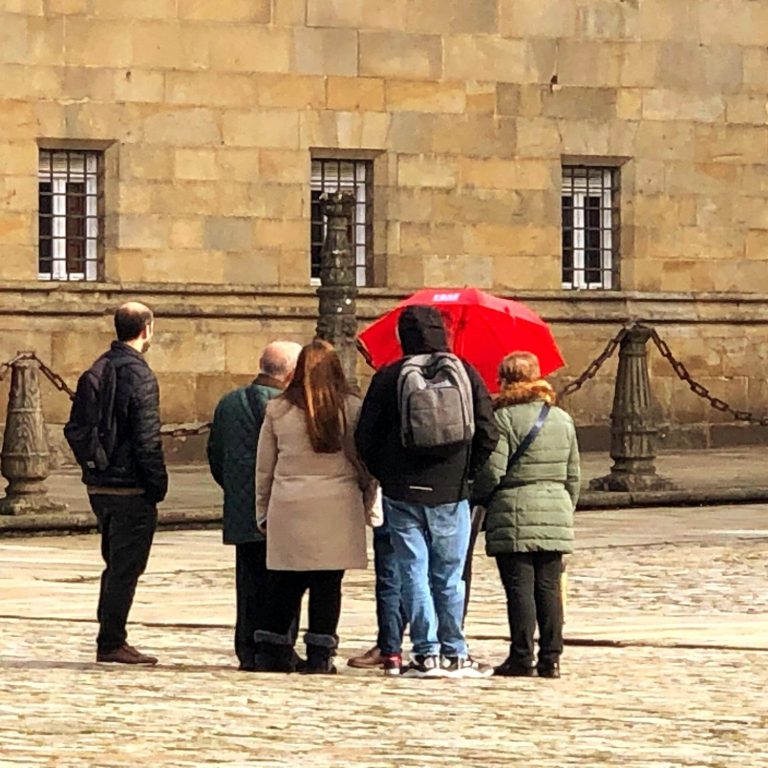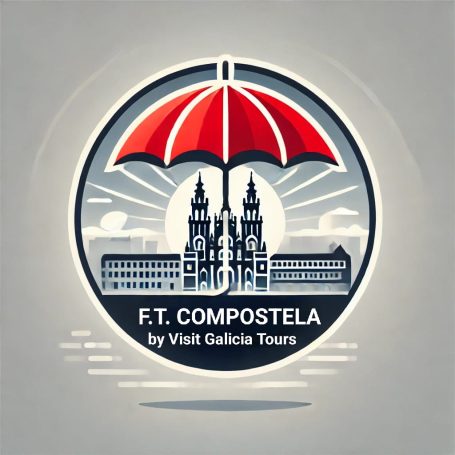Blog FT Compostela

5 Reasons Why Taking a Free Tour with Free Tour Compostela is the Best Option
Whether you arrive as a pilgrim after walking the Camino de Santiago or as a traveler eager to explore its charm, a guided tour can make all the difference in your experience.
At Free Tour Compostela, we have been showcasing the city with passion and professionalism since 2015. In fact, we are the highest-rated company on TripAdvisor and Google, with nearly 3,000 five-star reviews. Not convinced yet? Here are five reasons why taking a free tour with us is the best way to discover Santiago.
1. Discover Santiago’s Secrets with an Expert Guide
The streets of Santiago hold centuries of history, anecdotes, and curiosities that would be difficult to uncover on your own. Our guides are true enthusiasts of the city, and they will share everything from the origins of the cathedral and its Jacobean tradition to the hidden secrets behind the stones of this ancient city.
2. You Decide the Value and the Price
Our free tours are guided visits led by official guides with no fixed price. That means you determine the tour’s value. At the end of the tour, each visitor individually and objectively evaluates the guide’s work and the overall experience, choosing how much to pay. Payments can be made in cash or by card.
3. Find Your Way Around the City from the Start
Santiago can feel like a maze of cobbled streets, and taking a free tour at the beginning of your visit will help you get your bearings. Plus, our guides will give you recommendations on where to eat, other must-visit places, and the best ways to get around the city.
4. Explore in a More Sustainable Way
At Free Tour Compostela, we promote responsible tourism with small groups and local guides who encourage respect for the city’s culture and heritage.
5. Santiago is Best Experienced with a Story Behind It
Walking through Plaza do Obradoiro or the Plaza de Abastos is a completely different experience when you know the history and the figures who have passed through these places. A free tour doesn’t just show you sites—it immerses you in their soul.
Book Your Free Tour in Santiago with the Best
If you want to make the most of your visit to Santiago, don’t hesitate—join one of our free tours or opt for a private tour for an even more personalized experience. Book directly on our website:
Blog FT Compostela

Ascension Festivities
The Ascension festivities are one of the most important celebrations held in the city of Santiago de Compostela in May. The festivity lasts several days and offers a variety of activities and events for all tastes.
During the festivities, open-air concerts, traditional dances, handicraft exhibitions and activities for children are held in different parts of the city. Do not miss the cabezudos parading through the main streets of the old town.
The festivities of the Ascension are a unique opportunity to know and enjoy the culture and traditions of Santiago, in a festive and joyful atmosphere.
In addition, the Ascension is a fantastic time to take a guided tour of the historic center with our guides. Book your place now!
You'll find below the official program of the festivities in the following link:
Blog FT Compostela

Holy week in Santiago de Compostela
Holy Week in Santiago de Compostela is a significant religious and cultural celebration in the city, commemorating the passion, death, and resurrection of Jesus Christ.
During this week, there are numerous processions and liturgical events in the Cathedral of Santiago de Compostela and other churches in the city.
Holy Week in Santiago de Compostela begins on Palm Sunday with the procession of the palms, in which the faithful carry palm branches and olive branches to commemorate Jesus' entry into Jerusalem. Throughout the week, various processions take place, in which images of the Virgin, Jesus, or other saints are carried in an atmosphere of great devotion and solemnity. These processions are accompanied by religious music and the drums and trumpets of the music bands.
On Holy Thursday, the Mass of the Lord's Supper is celebrated, commemorating Jesus' Last Supper with his disciples. After the Mass, the procession of Silence takes place, in which penitents move in silence through the city's streets.
Good Friday is the most solemn day of Holy Week in Santiago de Compostela. The procession of the Holy Burial takes place, in which the image of Jesus dead on the cross is carried.
On Holy Saturday, the Easter Vigil is celebrated, commemorating Jesus' resurrection.
Holy Week in Santiago de Compostela is a unique experience and an opportunity to immerse oneself in the culture and religious tradition of the city.

Gastronomy in Santiago
The cuisine of Santiago de Compostela is an integral part of the city's culture, offering a wide variety of typical dishes and culinary delights. Here are some of the most notable dishes and products:
Pulpo a la gallega: This is one of the most famous and appreciated dishes in the region. It is cooked in water and salt, and served with olive oil and paprika.
Empanada gallega: This is a pie filled with meat, fish, or vegetables, and covered with bread dough. It is a typical dish of the region, and is ideal for picnics or street food.
Lacón con grelos: This is a dish made with lacón (salted pork) and grelos (a vegetable similar to cabbage). It is usually served with boiled potatoes and chorizo.
Zorza: This is minced meat marinated with paprika, garlic, and other spices. It is served fried, and is often accompanied by potatoes or bread.
Tarta de Santiago: This is a typical dessert of the region, made with almonds, sugar, and eggs. It is decorated with powdered sugar in the shape of the cross of Santiago.
In addition to these dishes, Santiago de Compostela offers other typical products of the region, such as tetilla cheese, filloas (a kind of crepe), albariño wine, and orujo (a Galician brandy). The city has a wide variety of restaurants and bars where you can enjoy local cuisine, from the most traditional to the most innovative.

The Way
The Way, also known as Camino de Santiago, is one of the most important pilgrimage routes of Christianity and has been traveled by pilgrims for over a thousand years.
There are multiple routes leading to Santiago de Compostela, but the most popular are the French Way, which begins in the French city of Saint-Jean-Pied-de-Port and Roncesvalles, the Northern Way, which starts in Irún (north of Spain), the Silver Way, from Cádiz (South of Spain), the Portuguese Way, from Lisbon, the Primitive Way, from Oviedo in Asturias, and the English Way, which starts in A Coruña and Ferrol in Galicia.
The Way is marked with yellow arrows and scallop shells, which are the symbol of the pilgrimage.
The Camino ends at the KM0 located in the center of the Obradoiro Square in Santiago.
Pilgrims on the Way usually make the route on foot, by bicycle or even on horseback.
The Camino de Santiago is not only a physical journey, but also a spiritual one. Regardless of motivation, completing the Camino is a significant accomplishment and a life-changing experience for many who undertake it.
Necesitamos su consentimiento para cargar las traducciones
Utilizamos un servicio de terceros para traducir el contenido del sitio web que puede recopilar datos sobre su actividad. Por favor revise los detalles en la política de privacidad y acepte el servicio para ver las traducciones.
